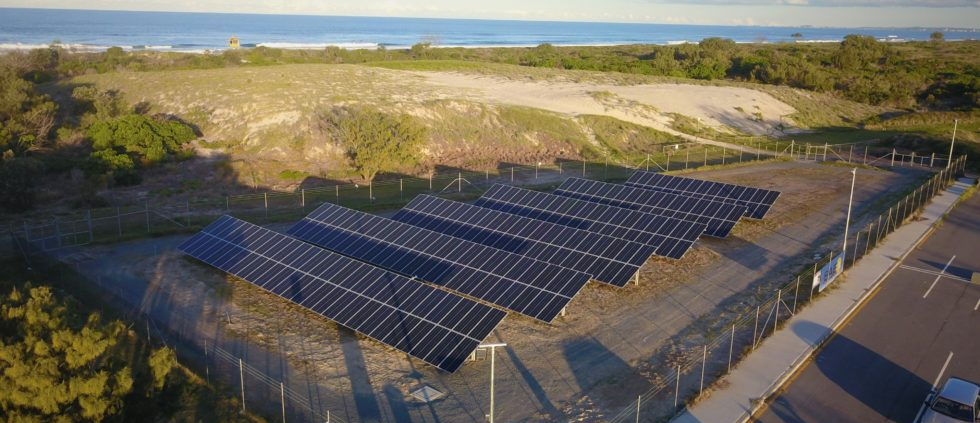Iconic Gold Coast Sand Bypass System making the most of solar power
The Gold Coast Waterways Authority has taken further steps to improve the operation of the iconic Sand Bypass System at The Spit, using a pilot solar array to help meet the operation’s day-time energy needs.
The Sand Bypass System is a critical component of the Gold Coast’s waterways network, but it consumes a large amount of power to pump sand under the Seaway and across to South Stradbroke Island to keep the waterways safe and navigable.
The solar array is starting to pay dividends by improving energy efficiency and reducing the carbon footprint of the Sand Bypass System.
The pilot system started operating in late June. An app linked to the array shows it’s already generated about 30 megawatt hours of electricity and reduced carbon emissions by over 11 tonnes, which is the equivalent of planting almost 40 trees.
The pilot is not only helping to reduce the System’s carbon footprint, it also aligns with the Queensland Government’s vision for growing a green peninsula under the Master Plan for The Spit.
Gold Coast Waterways Authority (GCWA) CEO Hal Morris said the 100-kilowatt solar photovoltaic array is generating over 600 kilowatt hours of electricity each day which is helping meet the day-time energy needs of the System.
“We’re using the app to better understand the System’s energy profile and adjusting operations to make the most of the solar energy being generated,” Mr Morris said.
“One of the changes we’ve made is to run the air compressor, which is one of our biggest users of power during the day to coincide with peak solar generating times. We use the air compressor for our tools and for backflushing the Sand Bypass System’s jet pumps.”
The contract to design, install and maintain the pilot solar system was awarded to a local company, SAE Group.
SAE Group employed a team of 20 people on the project. They were all locally based experts including engineers, designers, installers and people undertaking servicing and monitoring.
The GCWA will use the pilot to improve understanding of the solar output potential of the area, the impact of the coastal environment on solar systems and the Sand Bypass System’s energy load profile.
This information will help GCWA decide if the solar system can be expanded to further reduce operating costs and the Sand Bypass System’s carbon footprint in future.
The solar pilot builds on earlier energy efficiency measures which have included upgrading the jetty pumps to reduce power consumption during start-up operations and running the pumping system at night to take advantage of off-peak tariffs, slashing energy bills by about $150,000 over the last few years.
Below is a quick view of the system under construction.





